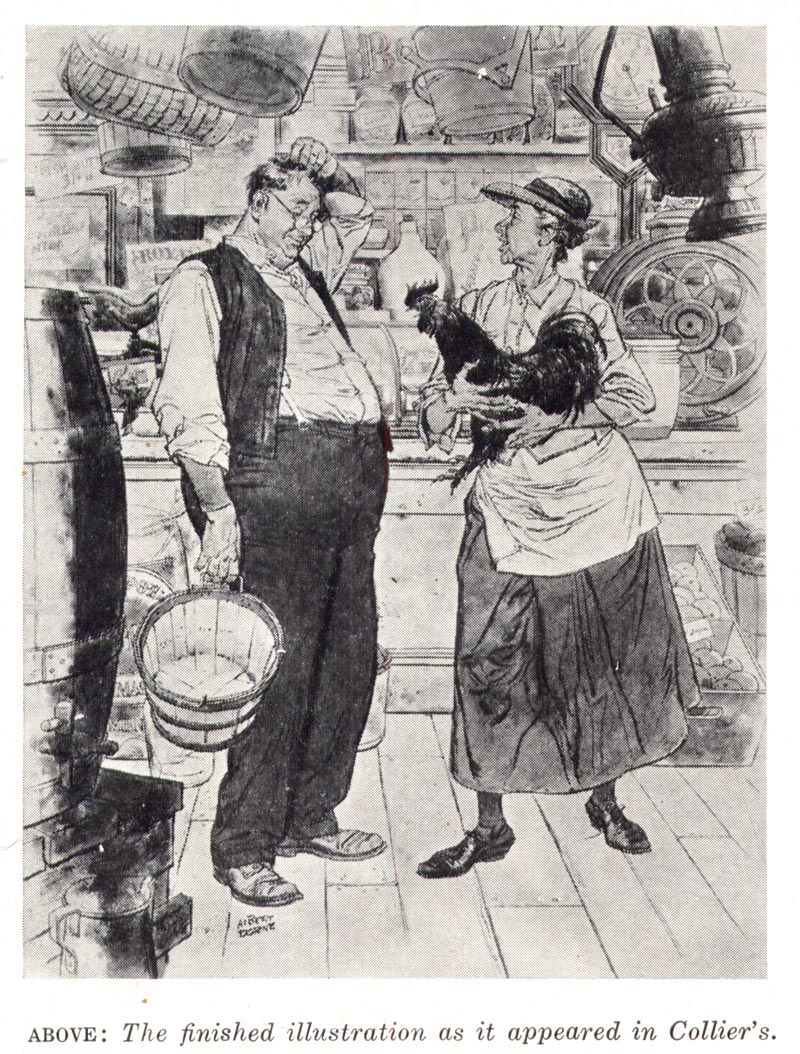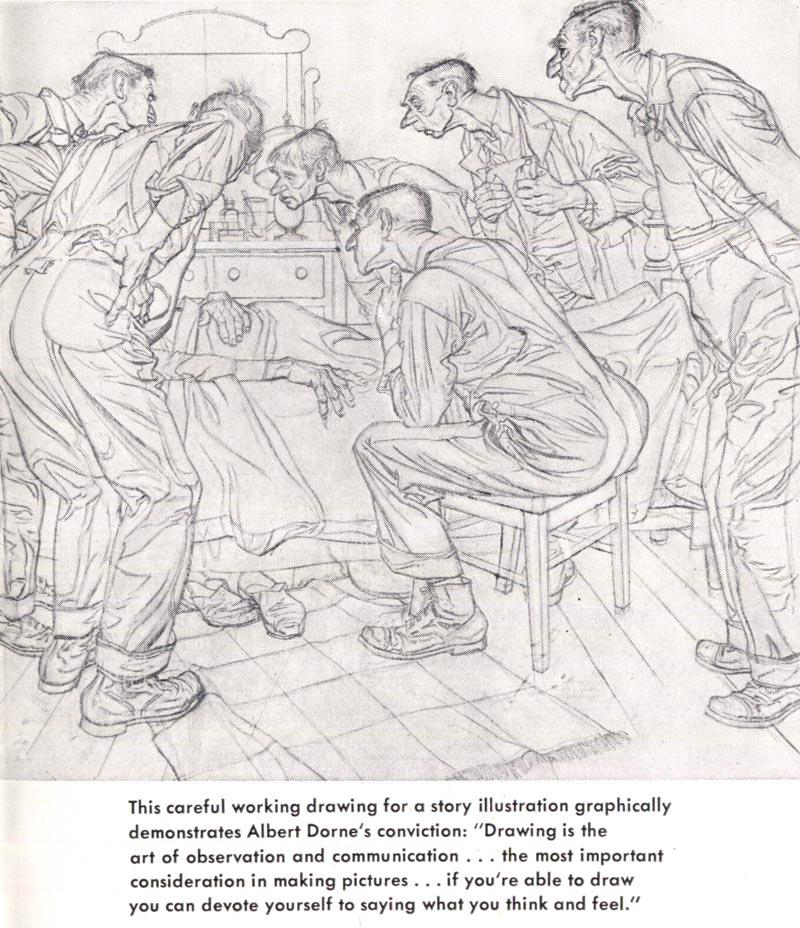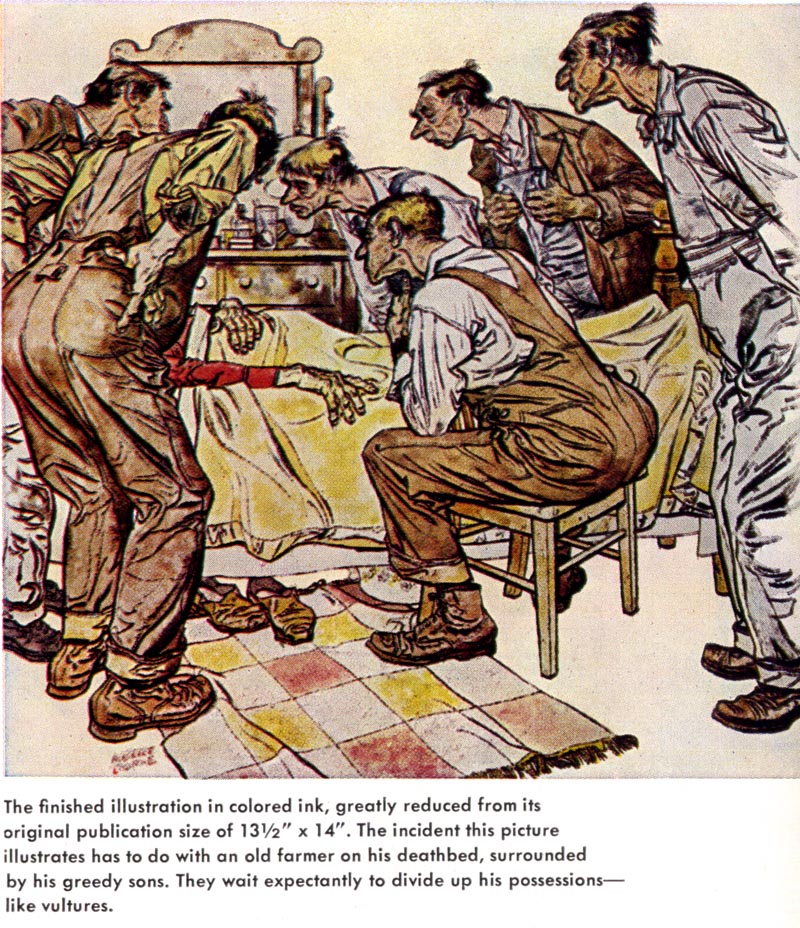
I suspect some readers of the last week's posts have dismissed Al Dorne as nothing more than a shrewd businessman out to make a quick buck at a lucrative racket. A commercial artist whose chief concern was with the "commercial" half of that title. Nothing could be further from the truth. Listen to Dorne's philosophy on the importance of drawing and what its true purpose is:
"If you are able to draw you can devote yourself to saying what you think and feel. The more you know about drawing, the more productively creative you can be. You are no longer concerned with "how" to draw, but rather with "what" to draw. You are only concerned with art, and your knowledge and skill in the craft of drawing thus become the natural working extension of your artistic and creative self."

Al Dorne, who was always too poor to go to art school during the younger days of his life, began drawing when he was five years old. Rather than feel self-pity over circumstances that had him working round the clock to support his mother and siblings, Dorne considered himself incredibly lucky because, "we lived within roller-skating distance of the Metropolitan Museum and I haunted the place from the time I was ten years old."

"I drew every sculpture and piece of armour in the place. I even copied the figures on the Grecian urns. I played hookey from school and would go to the museum every Monday and Friday for over two years. I found out later that my teachers knew all the time what I was doing and condoned it. Actually I was probably the youngest person ever to be given a sketching permit by the Met."

"In addition to providing me with so many wonderful subjects to draw, the Met had a profound effect on me. I was able - in this marvelous environment - to saturate myself with great art of all ages. It affected me for the rest of my life."

"And I sincerely believe it taught me to distinguish between the mediocre and the worthy. Those early years in the Met shaped my values in art."
* My Al Dorne Flickr set.
Nobody else could "draw through" like Dorne.
ReplyDeleteA phenomenal and hard earned skill applied all too frequently to mundane subject matter.
ReplyDeleteI don't want to say it was a waste of a great talent, because he fulfilled his dreams, helped others and provided for his family.But that fantastic draughtsmanship could have been put to a higher purpose.
Maybe Mr Dorne's pictures could have graced the same gallery he haunted in his youth.
I never tire of seeing those beautiful examples of his skill.
Chad; I just don't know what to make of that comment. To refer back to our discussion in the earlier post, would you agree Toth's employment history and choice of subject matter was equally mundane most of the time?
ReplyDeleteAnd if Dorne's draughstmanship could have been put to a higher purpose and been hung in galleries, where does that leave Fawcett? He also did his share of Coca Cola ads and such...
Not angry here... just... confused.
Chad's not wrong, exactly, but a little idealistic and naive (no offense) here -- I'd agree it would have been nice if Dorne had been able to apply his skill more toward fine art (though fine art of his day was moving against drawing skill, toward "modern art") -- but the fact is, Dorne DID have to earn a living. He didn't have the luxury of creating art for art's sake - - few do.
ReplyDeleteWe all live in the limitations of our times and circumstances and Dorne did better than most at transcending those limitations, developing amazing skills and perception.
Al Dorne's drawings & paintings in advertising and editorial illustration were scene, enjoyed, and admired by the people of his time all over the country. And they still are.
ReplyDeleteFor a long time I've wanted to see this picture of the man and the lady with the rooster by Al Dorne in a decent size! I had only seen it in a book I have, but reduced to a bit less than 4 inches in height! Thanks a lot!
ReplyDeleteActually, for all the scans in general, but that one has some sort of special place in my memory. It was probably for me the most influential, impacting, four inches of drawing I've seen, and now I finally can see it in a size it deserves!
I find illustration often more interesting than fine art. Fine art often can be just as mundane, and somewhat worse, pretty much like random photographs taken by amateurs in family and friend meetings, just with better composition and technique. That's often what I find more interesting in fine art, usually, the (usually painting) technique, rather than some deeper meaning it supposedly have; illustration will in the other hand often serve a purpose, selling an product, service or associating a brand with a good idea, which is in and of itself an interesting endeavor, and there are quite a few interesting results. Other situation where I find fine art interesting, besides pure admiration of technique, is as an historical record of something. But besides that, I'm yet to be more touched by a deep meaning in fine art. This is more a declaration of ignorance and personal preference than bashing of fine arts, I don't want to offend anyone.
ReplyDeleteThanks so much for sharing such great inspiring words.
ReplyDeleteAl Dorne was not only a skillful draftsman, but also the consumate professional illsutrator as businessman as well.
All I'm saying is, how great would it be to see some Dorne murals in museums or public spaces a la Dean Cornwell, or some 'real life' reportorial art, , like Weaver, as you said... something without a coke bottle or a bloody jukebox!
ReplyDeleteAlex Toth's task,from a historical perspective I would argue,would be to dignify a relatively new art form -the comic strip- by introducing a new design aesthetic, which he continually refined and simplified over time. Within a couple of years of starting his career he was already the outstanding young talent in his field, purely for his drawing skill but he obviously felt that wasn't enough for him, hence the exploration.
I think his subject matter was a little beneath him content-wise, but he had to do the best with what was offered and support a young family.
With regard to Fawcett,he had already tried and become disillusioned with the 'fine art' field and decided to bring that sophisticted attitude to illustration.You can see that he is cut from very different material from his contemporaries.
I,for one, can't wait for the books on Toth and Fawcett to appear this year. Maybe you could persuade David to do an 'appetiser'.And maybe you should consider doing a volume on Al Dorne!
Chad....is there a new TOTH book coming out this year that i don't know about?...
ReplyDeleteThanks for such an amazing blog, Leif. I love Dorne's simple and humble approach to drawing. I know artists who show in the most "important" galleries in NYC and Europe, and have even had mid-career retrospectives, who cannot draw. Their place in the art world is secured by a willingness and understanding of how highbrow art politics is played. Who draws the line anyway between "fine art" and "commercial art?" Collectors.
ReplyDeleteThat drawing of all the old guys waiting for their buddy to kick the can is one of my all time favorites of Dorne's. I completely agree with his philosophy that if you can draw, then you can do anything. It all starts with mastering line, shape, and value...then of course there is mastering draftsmanship of good form and perspective, yet that comes in time.
ReplyDeleteLovely post again, Leif!
Brian, TWO books on Alex Toth due out this year!
ReplyDeleteFirst one out is a biography in the vein of the Noel Sickles book from 2009.Authored by Dean Mullaney. Rare stuff,unpublished stories etc. Title is,
"Genius, Isolated: The Life & Art Of Alex Toth."
Book two is an overview of AT's years at Standard comics,a golden period for the magyar master.Author is Greg Sadowski,who delivered 2 volumes on Bernard Krigstein.Both highly recommended.That title,
"Setting the Standard: Alex Toth at Standard Comics 1952-54"
So, all in all, a good year for Tothfans.
Wow, beautiful stuff. What I find intriguing about the pencil work is the thickening of the line as it defines shapes. We employ this technique in animation to give weight, volume, and some perspective.
ReplyDeleteWow! The more I read about these classic illustrators the more I understand how to approach my art.
ReplyDeleteThere is great irony in the fact that 20th century commercial art --openly intended to "con-vince" the potential customer of the value of some mundane product or service is actually less of a "con" than 90% of 20th century "fine art," which has mostly been a joke in terms of skill, representation, or inspiration. Thank God (er, actually, Leif) for this fantastic website, as daily review shows the honesty in the work of people like Dorne in the cause of art with skill, ideas, integrity and verve. Frankly, 90% of modern fine art simply can't compete with the illustrations posted on this website daily. I'd much rather see Dorne's skill in service to the ubiquitous Coke bottle than in service to some conventional "Man's inhumanity to Man" scene admired by the avante garde. There's a very easy test for the importance of the art presented here -- what would DaVinci or Vermeer like to look at and ponder over -- the illustrations posted here, or the dreck hanging in the Museum of Modern Art?
ReplyDelete...And Maybe Bernstein and Glass wasted their time on 'big stuff' when they could have been composing ringtones and commercial jingles for the 'masses'.
ReplyDeleteGood Lord, is this blog turning into a watering-hole for Phillistines?
To Embarassed brother:
ReplyDeleteIts a non sequitur to muse on the work by those who created modern classical music and suggest that they should have created commercial jingles instead. They didn't, so its not relevant that they might have. No, the point is that the modern visual arts have mostly been a joke, and the talent, skill and creativity can mostly been found in commercial art. That being said, some composers (Cage) would have done better if they had stuck to jingles.